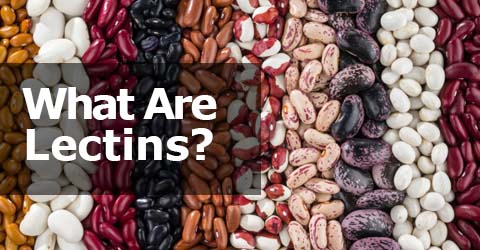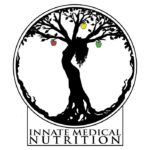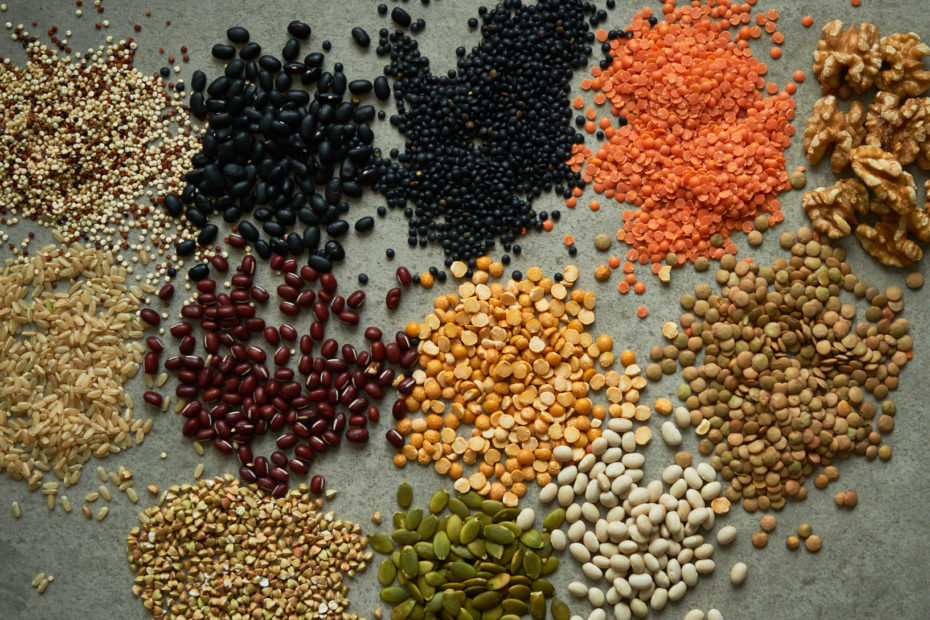Anyone with autoimmune or gut issues have probably run across a discussion of nightshades and lectins and have been advised to steer clear! Why and what are they?
All foods that are considered nightshades contain lectins, but not all foods that contain lectins are nightshades.

Lectins are proteins within foods that are carbohydrate binding and that stick to the cell membrane in the gastrointestinal tract. Lectins are not digestible by the body, which in the raw plant that it’s found in is great and protective, but for a compromised human system can wreak havoc. Plants, vegetables, and seeds use lectins to stop bugs, micro-organisms, pests and other threats from eating them. The lectin cover of certain seeds is thought to secure the seed as it makes its way through the animal’s digestive system to be disposed for germination upon elimination. What a unique way to spread seeds right!?
In a healthy system, the lectins within foods cause little to no harm as it passes through the system. The GI walls and lining can be repaired quickly. The lectins are contained to the GI and not allowed to enter the bloodstream, and the protein is eliminated just like any other anti-nutrient found in foods. It is when lectins are introduced into a compromised system either by “leaky gut” or disorders that compromise the immune system such as AIDS, Lyme disease, or any type of bacterial overgrowth (all of which are usually paired with “leaky gut”), that it can cause negative side effects. In these scenarios, lectin is able to pass into the bloodstream. When a foreign particle is found within the bloodstream, it triggers an immune response to isolate the potential threat/invader and rid it from the body. Over time, as the lectin protein continually appears in the bloodstream, the body creates antibodies to the protein.
When the immune system in the body is triggered, it puts the body in a protected state that equates to a stressed state. It is trying to protect the body from damage that can be done from the foreign particle, pathogen etc., in this case lectin is acting as a poison. Side effects from the body being in a constant state of stress, the symptoms of the immune system triggered constantly over a food are many including: achy joints, brain fog, fatigue, and diarrhoea to name a few. This vicious cycle does not allow the body to heal, and those with a compromised immune system have a great disadvantage keeping the GI repaired to act as a line of defence from anything to enter the bloodstream.
Over time, symptoms worsen along with the “leaky gut” that allows more foreign particles into the bloodstream contributing to the list of autoimmune disorders apparent today. Others may identify these symptoms with allergies, or feel they started to become “allergic” to a new food. Both allergies and “allergic” reactions are regulated by the immune system. For many who have foods affect them negatively later in life, they previously have typically built an antibody to a protein within that food that has gone into the bloodstream repetitively and now gives the body a stressed protecting reaction upon consumption of the food. Normally, these are foods that my clients refer to as ones they “use to eat all the time”.
By no means am I saying autoimmune disorders are caused by lectins. There are many triggers that can cause a consistent immune response and program the body to attack itself. It is to be pointed out that our western diet is very high in lectin-based foods and research has shown an increase to lectin sensitivity increase over the years. All poison or medicine is in the dosing… This means a small amount to a healthy person will have no effect where a small amount to a compromised system can have a noticeable negative effect. A large amount over time to a healthy system can have a negative effect where a small amount can harness the positive effects of lectins in the body. Lectins within a healthy system and handled properly by the gastrointestinal tract aid in essential functions of the body and play a role in immune function, cell death, cell growth, and body fat regulation.
It should also be noted that lectins are found in many whole foods! There is really no way to have a zero lectin diet, and in my professional opinion it’s not optimal. The foods listed here are the foods that contain the highest sources of lectins. The amount of lectins can add up quickly over the day, which can overload your immune system, liver, and gastrointestinal tract. The goal is to keep the number as low as possible through the day, to keep the burden low enough so the body can move from a stressed state to a healing state.
FOODS THAT CONTAIN LECTINS
- Legumes
- Beans (including green beans)
- Peas
- Lentils
- Chickpeas
- Peanuts
- Peanut butter
- Peanut oil
- Squash
- Sea food
- Soy
- Dairy
- Eggs
- Grains
- Barley
- Quinoa
- Rice
NIGHTSHADE VEGETABLES (CONTAIN LECTINS)
- Eggplant
- Tamales
- Pimentos
- Tomatoes
- Goji berries
- Potatoes
- Tobacco
- Tomatillos
- Grains
- Peppers
- Cayenne
- Paprika
- Chili peppers
- Bell pepper
CAN WE REMOVE LECTINS FROM THE FOODS WE LOVE?
Not all foods has the same quantity of lectins. Some foods contain higher amounts and should be avoided, while others have little amounts and are more easily tolerable. There are ways of processing the foods to decrease the number of lectins, but by no means does it eliminate them entirely. Lectin quantity varies inside of each listed food and can also vary from harvest to harvest.
Here is a list of ways to decrease the quantity of lectins within different foods;
SPROUTING
Sprouting can be done for seeds, beans and grains that the lectin is normally found in a seed shell. The sprouting process metabolizes the lectin, so the longer the sprouting process, the less the lectin. In some cases, like with alfalfa sprouts, sprouting increases the lectin count.
SOAKING AND COOKING
This is the oldest way of decreasing the number of lectins within beans and seeds. The longer the soak, the less the lectin. Make sure to rinse and change water often.
Cooking is known for its denaturing effects. Cook enough to denature the anti-nutrients, but not enough to destroy the nutritional content and enzymes of the food.
FERMENTATION
In the fermentation process, the living organisms within the fermented foods assists with the digestion and breakdown of the lectin content.
These methods are great and I recommend that people add them into daily life. However, anyone doing an elimination diet, AIP diet, gut repair program, etc. should steer clear of all lectin and nightshade foods until diet or program is completed and the reintroduction period has begun.
Reference: https://www.ncbi.nlm.nih.gov/pubmed/25599185

